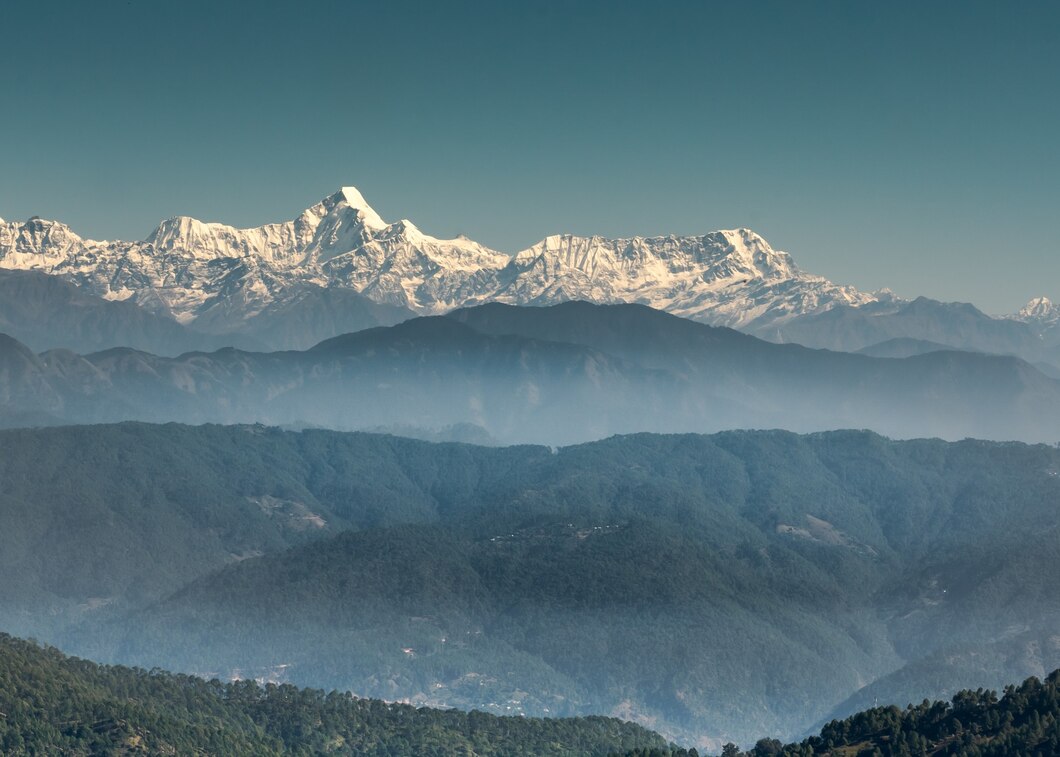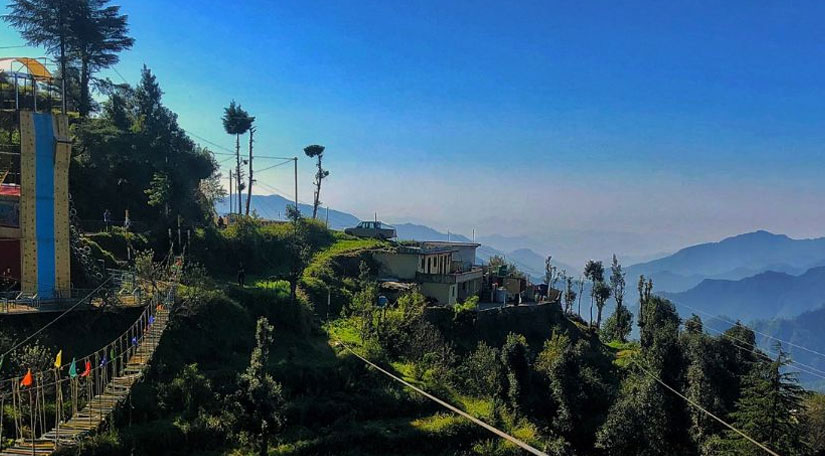Wildlife in Kanchenjunga National Park – A Nature Lover’s Guide

Kanchenjunga National Park is a UNESCO World Heritage Site and a paradise for nature lovers, trekkers, and wildlife enthusiasts. Located in the Indian state of Sikkim, this national park is home to diverse flora and fauna, breathtaking landscapes, and the towering Kanchenjunga peak. Whether you seek adventure through Kanchenjunga trekking or wish to experience the unique biodiversity of this region, Kanchenjunga tourism offers an unforgettable journey into the wild.
Introduction to Kanchenjunga National Park
Kanchenjunga National Park, also known as Khangchendzonga National Park, is spread over 1,784 square kilometers and is one of the most significant protected areas in India. Named after the mighty Kanchenjunga peak, the third-highest mountain in the world, this park is home to a wide variety of wildlife species, alpine meadows, glaciers, and dense forests.
Key Highlights of Kanchenjunga National Park
-
Location: Sikkim, India
-
Established: 1977
-
UNESCO World Heritage Status: Achieved in 2016
-
Biodiversity: Rich flora and fauna including rare and endangered species
-
Best time to visit Kanchenjunga: March to May and September to November
-
Trekking Routes: Goechala Trek, Green Lake Trek, Dzongri Trek
Wildlife in Kanchenjunga National Park
The park is home to a vast range of wildlife, making it an ideal destination for wildlife enthusiasts. The dense forests and rugged terrain provide a perfect habitat for many endangered and rare species.
Mammals Found in Kanchenjunga National Park
-
Snow Leopard – The elusive big cat of the Himalayas.
-
Red Panda – The adorable yet endangered species found in bamboo forests.
-
Himalayan Black Bear – A significant predator in the park.
-
Musk Deer – Famous for its scent-producing gland.
-
Blue Sheep (Bharal) – Commonly found in high-altitude regions.
-
Himalayan Tahr – A species of wild goat native to the Himalayas.
Birds of Kanchenjunga National Park
Birdwatchers will find Kanchenjunga National Park a haven with over 300 bird species, including:
-
Himalayan Monal (State bird of Sikkim)
-
Blood Pheasant
-
Satyr Tragopan
-
Snow Pigeon
-
Golden Eagle
-
Eurasian Griffon
Reptiles & Amphibians
-
Himalayan Pit Viper
-
Common Toad
-
Stream Frogs
Flora of Kanchenjunga National Park
The park’s vegetation changes according to altitude:
-
Subtropical Forests (1,800 – 3,000m): Rhododendrons, oak, maple.
-
Temperate Forests (3,000 – 4,000m): Fir, birch, magnolia.
-
Alpine Meadows (Above 4,000m): Grasslands and medicinal plants.
Kanchenjunga Trekking – An Adventure of a Lifetime
Trekking in Kanchenjunga National Park is one of the most exhilarating experiences for adventure lovers. Here are some of the best treks:
1. Goechala Trek
-
Duration: 10-12 days
-
Difficulty Level: Moderate to Difficult
-
Highlights: Stunning views of Kanchenjunga peak, Samiti Lake, lush green valleys.
2. Green Lake Trek
-
Duration: 12-14 days
-
Difficulty Level: Challenging
-
Highlights: Remote landscapes, alpine lakes, unique wildlife sightings.
3. Dzongri Trek
-
Duration: 5-7 days
-
Difficulty Level: Moderate
-
Highlights: Panoramic views of snow-covered peaks, rich biodiversity.
Best Time to Visit Kanchenjunga National Park
The best time to visit Kanchenjunga depends on your purpose:
-
Spring (March to May): Ideal for wildlife spotting and blooming rhododendrons.
-
Autumn (September to November): Best for trekking and clear mountain views.
-
Winter (December to February): Extreme cold, but suitable for snow lovers.
-
Monsoon (June to August): Not recommended due to heavy rainfall and landslides.
How to Reach Kanchenjunga National Park
By Air
-
The nearest airport is Bagdogra Airport (IXB) in West Bengal, about 160 km away.
-
From Bagdogra, hire a taxi to Yuksom or Gangtok.
By Train
-
The nearest railway station is New Jalpaiguri (NJP), around 150 km away.
-
From NJP, taxis and buses are available to reach Gangtok and Yuksom.
By Road
-
Well-connected by road via Siliguri, Gangtok, and Yuksom.
-
Buses and taxis are available from Gangtok to the park’s entry points.
Kanchenjunga Tourism – Other Attractions Nearby
-
Yuksom: The base for most Kanchenjunga treks, known for its monasteries and scenic beauty.
-
Tashi Viewpoint: Famous for breathtaking sunrise views of Kanchenjunga peak.
-
Pemayangtse Monastery: A significant Buddhist monastery near Pelling.
-
Khecheopalri Lake: A sacred lake surrounded by lush greenery.
Travel Tips for Kanchenjunga National Park
-
Obtain the necessary permits before entering the park.
-
Wear warm clothing, as temperatures can drop drastically.
-
Carry essential trekking gear if planning a trek.
-
Respect the local culture and avoid disturbing wildlife.
-
Avoid traveling during monsoons due to the risk of landslides.
Conclusion
Kanchenjunga National Park is an unparalleled destination for adventure, wildlife exploration, and scenic beauty. Whether you’re trekking through its rugged terrain or observing its exotic wildlife, this park offers an experience like no other. Plan your visit with Adotrip and explore the hidden gems of this UNESCO-listed wonderland.
FAQs About Kanchenjunga National Park
1. What is the best time to visit Kanchenjunga National Park?
The best time to visit Kanchenjunga National Park is from March to May and September to November when the weather is ideal for trekking and wildlife exploration.
2. What wildlife species can be spotted in Kanchenjunga National Park?
Visitors can spot Snow Leopards, Red Pandas, Himalayan Black Bears, Musk Deer, and over 300 bird species in the park.
3. How can I reach Kanchenjunga National Park?
The park can be accessed via Bagdogra Airport, New Jalpaiguri Railway Station, and roadways from Gangtok and Yuksom.
4. Is trekking allowed in Kanchenjunga National Park?
Yes, Kanchenjunga trekking is popular, with routes like Goechala Trek, Green Lake Trek, and Dzongri Trek.
5. Do I need a permit to visit Kanchenjunga National Park?
Yes, visitors need a permit from the Sikkim Tourism Office to enter Kanchenjunga National Park.



